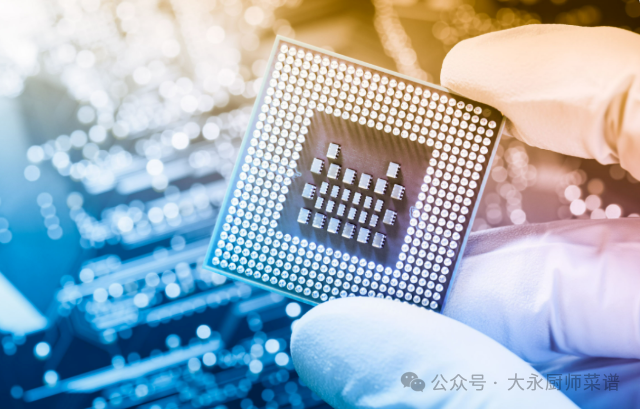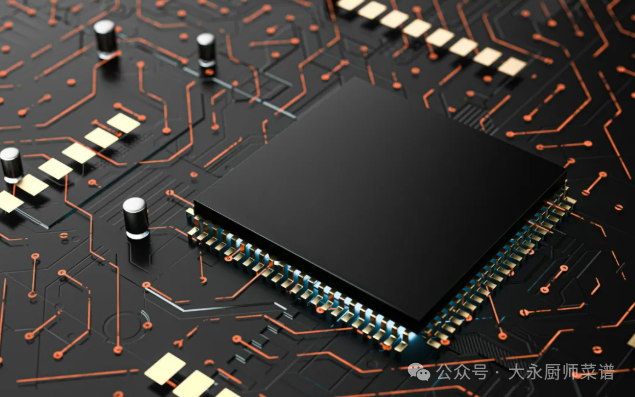The U.S. Is Not Betting on China’s Inability to Produce Chips: Both Sides Know They Will Compete in High Technology and Global Markets
In this world, competition in the technology sector has always been marked by “stalemates.” Especially in the semiconductor industry, it is like two dragons circling in space, occasionally releasing flashes of lightning. Currently, the game between China and the U.S. in the chip sector has quietly entered a new phase. The U.S. has attempted to curb China’s rise in the chip industry through a series of bans, but the reality is that China has not only resisted suppression but has also become more determined in its counterattack. Although the U.S. firmly holds the critical advantage of “high-end chip technology,” China understands that relying solely on technology cannot win the future; the ultimate outcome will depend on market dynamics and global cooperation and competition.

1. The Accelerator Behind the Bans: Self-Sufficiency and Export Counterattacks
The U.S. bans were originally intended to make China’s chip industry struggle, but unexpectedly, they have become an “accelerator” for China’s self-breakthrough. While the U.S. suppresses Chinese semiconductor companies and frequently issues export bans, China has not only refused to yield but has also accelerated its pace of independent research and development. The reliance on imports is rapidly changing, and export figures have quietly surpassed expected targets. This shift from passive to active is key to China’s rise in the chip sector.
China’s “counterattack” in the chip industry has not happened overnight; it has accumulated technology and experience through numerous challenges and difficulties. From initial imitation to current innovation, China’s chip manufacturing now possesses the capabilities for independent design, production, and packaging testing. Moreover, leveraging its low-cost manufacturing advantage, China is gradually increasing its market share in the mid-to-low-end market, with more countries beginning to pay attention to “Chinese chips” and gradually importing chips from China.
2. The Rise of China: Not Just Technology, But Market Expansion
“Chinese chips” are not only making a mark in the domestic market but are also gradually establishing a foothold in the global market. From a technological perspective, China has made significant breakthroughs in thermal design, low-power technology, and particularly excels in chips for mobile devices and smart home applications. From a market perspective, China has not only solved the issue of self-sufficiency but has also secured a place in the mid-to-low-end chip market. This means that China is no longer a “follower” in high-end chips but a competitor in the global chip market.

3. Low Cost and Innovation: The Competitiveness of Chinese Chips
When discussing the advantages of Chinese chips, one cannot overlook the low-cost manufacturing model. This cost advantage gives Chinese chips unparalleled competitiveness in the global market. Furthermore, China’s industrial chain is tightly integrated, with almost no weak links from raw materials to production equipment supply chains. This “seamless connection” not only enhances production efficiency but also reduces intermediate costs, allowing Chinese chips to break traditional competitive pricing structures.
Of course, relying solely on cost advantages is far from sufficient. China’s technological innovation, especially in thermal design and low-power technology, has quietly influenced the direction of the global chip market. Particularly in the fields of new energy vehicles, artificial intelligence, and big data, Chinese companies are gradually showcasing their technological strength to the global market through innovation.
4. U.S. Anxiety: The Pain of Global Market Competition
Although the U.S. chip industry holds certain technological advantages, it also faces significant pressure in global market competition. Especially with the rise of China’s chip industry, the U.S. is no longer the dominant power that can easily “control” the global chip supply chain. In terms of manufacturing capacity and supply chain dependence, the U.S. is increasingly reliant on China, which fills the U.S. with anxiety in the face of China’s chip rise. Particularly in the high-end chip sector, despite the U.S. having some technological advantages, China’s breakthroughs in other segments have threatened the U.S.’s leadership position in the global market.
However, what truly causes anxiety in the U.S. is not merely whether China can break through high-end chip technology, but whether China can gradually bring this technological progress into the global market, ultimately breaking the U.S.’s monopoly in the global chip sector.
5. Global Market: Who Will Be the Ultimate Winner?
In this “chip war,” the ultimate outcome will not only depend on technological confrontation but also on who can dominate in the global market competition. The chip competition between China and the U.S. is an inevitable product of globalization. The U.S.’s anxiety stems from the market challenges brought about by China’s rapid rise, while China understands that only through continuous innovation and seizing the initiative in the global market can it secure a place in future technological competition.
6. Future Possibilities: A Duet of Cooperation and Competition
Although competition between China and the U.S. in the chip sector is unavoidable, in the long run, both sides may still find opportunities for win-win cooperation. Globalization makes it impossible for any country to remain isolated, and technological development cannot be achieved solely through confrontation. In certain areas, cooperation may even become the key to future development. After all, China knows that apart from China, where else can the U.S. find such a stable production chain and vast market?
Therefore, the future chip market will not only be a competition of technology and markets between China and the U.S. but also a complex game of cooperation and confrontation in the context of globalization. In this game, whoever can better balance cooperation and competition will be able to maintain an undefeated position in the future global market.
In summary, the core of the China-U.S. chip game is not merely a technological confrontation but a struggle for the global market. China’s rise in the chip industry has broken the U.S.’s technological monopoly, and future technological development may rely not only on confrontation but more on the balance of cooperation and competition. Ultimately, China and the U.S. are destined to engage in deeper levels of competition and cooperation in this high-tech contest.